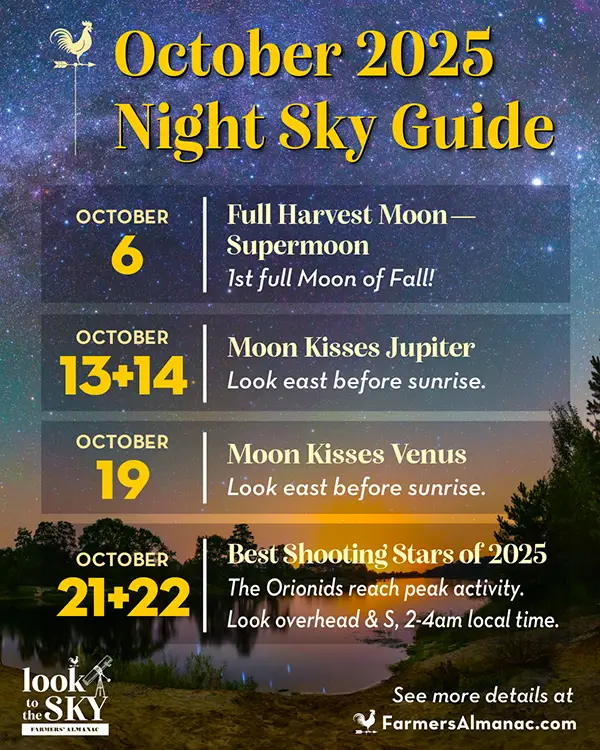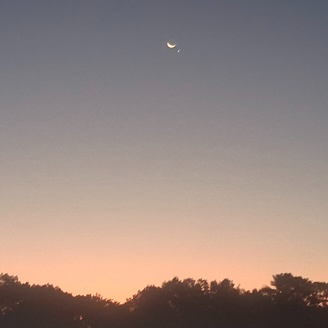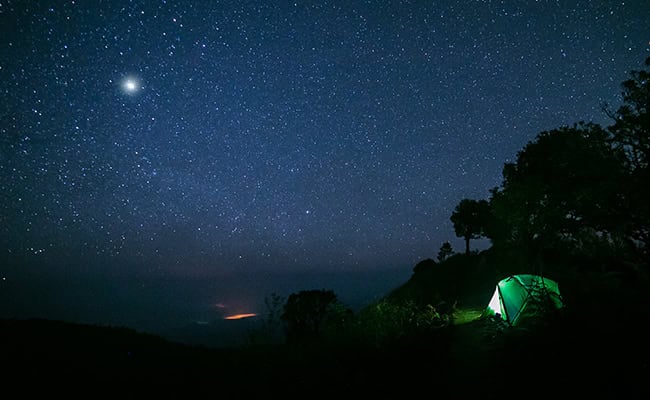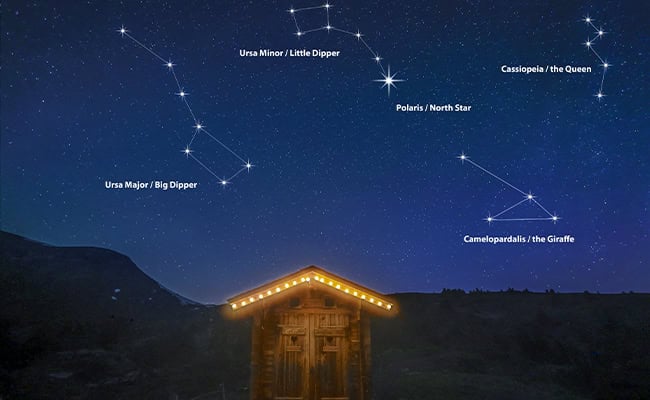The Farmers’ Almanac Night Sky Guide tells you sky watchers how to find the Big Dipper, North Star, and every month’s brightest stars. Learn about stargazing; how to “star hop” by locating one star with another! Have questions? Share with your fellow stargazing community here in the comments below. Our expert astronomers will give you personalized answers!
Here is a quick reference for planning ahead. Use this easy guide to book your next camping expedition, Grand Canyon vacation, or trip to any other starry destination—even your own backyard.
|
Best Days for Stargazing 2025
|
|---|
| January 1-5 |
| January 22-February 3 |
| February 21-March 4 |
| March 23-April 4 |
| April 21-May 3 |
| May 20-June 1 |
| June 19-July 1 |
| July 18-30 |
| August 17-29 |
| September 15-27 |
| October 15-27 |
| November 14-26 |
| December 13-25 |

Note: It is still possible to see bright stars on other days, but these are our expert recommendations—due to the Moon’s placement in the night sky. For the best results, reference your local weather forecast and find a “dark sky” away from city lights.

More Astronomy Guides
Since 1818, the Farmers’ Almanac has provided expert astronomical information. Here are links to astronomy guides with everything you need to know about the night sky, including rare upcoming events:
- Visible Planets Guide — Locate Venus, Jupiter, and More!
- Parade of Planets 2025 (includes September and October dates)
- 10 Brightest Stars
- Meteor Shower Calendar
Bookmark this page and share your love of stargazing with your family and friends!
Any questions? Contact [email protected]
What Is Stargazing?
Do you ever stop and gaze up on a clear night to see the bright stars above you? If so, you are a stargazer! Technically, the term stargazing applies to any celestial observation activity—whether you are gazing upon stars, meteor showers, or bright planets, etc.
Why Stargaze?
Stargazing connects you with nature, inspires adventure, and brings an important element of awe into your life. Recognizing the depth of the universe may help you gain more perspective to realize that big problems are much smaller than they appear to be. Recent studies also suggest that stargazing boosts creativity and may even help you sleep better at night.
What Is Star Hopping?
Star hopping is using one recognizable star or constellation to find another! For instance, using the “pointer stars” of the Big Dipper to locate the North Star. See below!
The Big Dipper
As you embark on your stargazing journey, Farmers’ Almanac suggests you begin by finding the Big Dipper.
What is special about the Big Dipper?
The Big Dipper is one of the easiest star patterns to recognize in the night sky. The seven stars of the Big Dipper are visible on almost every clear night in the Northern Hemisphere.
How do you locate the Big Dipper?
If you know where the Sun tends to set on the horizon, look a bit further to the right at night. (This is generally the north direction.)
Over the course of the year, the Big Dipper rotates counterclockwise around the North Star. (See below.) In the fall, the Big Dipper appears low on the horizon in its most recognizable ladle-like orientation, as if it were carrying liquid. During the winter months it tips upward. In the spring, the ladle appears high above the horizon and completely upside down—which is a fun way to think of why we get spring showers! (The Big Dipper is dumping its liquid out.) Some astronomers use the “spring up, fall down” to remember the Big Dipper’s position in the sky through the seasons.
Fun fact: The Big Dipper is an asterism, not an official constellation itself. The Big Dipper is however a part of a larger constellation, Ursa Major (the Great Bear).
Now that you have found the Big Dipper, you may locate the North Star!

The North Star
How do you find the North Star?
Finding the North Star is easy on any clear night. Start by finding the Big Dipper. (See above.) The two stars on the end of the Dipper’s “cup” point toward Polaris. If you open your hand and pretend to place your pinky finger in the cup, your thumb will show you where the North Star is.
Note: During fall nights, the Big Dipper may be too low on the northern horizon to see. On these occasions, you may use a nearby “w” shaped constellation called Cassiopeia to locate the North Star. It’s a bit harder to describe, so bear with us: First, draw an imaginary line to connect the tips of the “w” to make a “b” shape. Then draw a second line at a right angle to the first (perpendicular) pointing in the same direction as the center of the constellation to arrive at the North Star. (Let us know if you have any questions about this!)
What is so special about the North Star?
Most stars seem to travel a great distance over the course of the night, but Polaris, the North Star, is different. Because Polaris is located very close to the north celestial pole, it stays in the same place in the sky: due north.
North Star Navigation
Ancient sailors used the North Star as a compass to navigate. For this reason, the expression “North Star” is used to signify direction in one’s life and a standard for excellence. If someone refers to you as their North Star, it means you help them find their way.
Does the North Star always point north?
During our lifetime, Polaris will always point north. However in approximately 13,000 years, due to the Earth’s wobble effect, Polaris will eventually appear to move away from the pole. (At this point Vega will become the North Star.) But Polaris will become the North Star again in 26,000 years.

The Little Dipper
What is the difference between the Big Dipper and the Little Dipper?
The Big Dipper belongs to the constellation Ursa Major (the Great Bear) and the Little Dipper is part of the constellation Ursa Minor (the Little Bear).
How do you locate the Little Dipper?
The stars of the Little Dipper are much fainter than those of the Big Dipper. For this reason, it is much easier to find the Big Dipper. When the Big Dipper is right-side up, the Little Dipper is upside down and vice versa. Their handles extend in opposite directions.
The North Star marks the final star of the Little Dipper’s handle. See if you can “star hop” to locate the Little Dipper—even if it’s tough to see its muted stars!
The spiritual meaning of the Big Dipper, Little Dipper
The yin-yang orientation of the Big Dipper-Little Dipper is believed to signify balance and the connection between mother and child.
Other Recognizable Stars
Besides the North Star, Big Dipper, and Little Dipper, there are several other star patterns that appear throughout the year, regardless of the season. Here are a few:
- Cassiopeia, the vain Queen
- Cepheus, the Whale
- Draco, the Dragon
Would you like to know more information about any of these constellations—how to locate them or what they symbolize? Share your thoughts and questions in the comments section!
Join The Discussion
Were you able to locate the North Star using the Big Dipper?
What is your favorite star or constellation in the northern sky?
Which Farmers’ Almanac sky guide do you find most helpful?
Share your experience, photos, and questions in the comments below!


When it comes to the more difficult Cassiopeia constellation, maybe a little red line on the constellation would be a helpful guide along with the instruction. I appreciate all the good info, thanks for the article.
when are you posting the Febuary 2025 night sky guide?
Woohoo! Febraury 2025. Thank you….
when are you posting the January 2025 night sky guide?
when are you posting the January 2025 night sky guide?